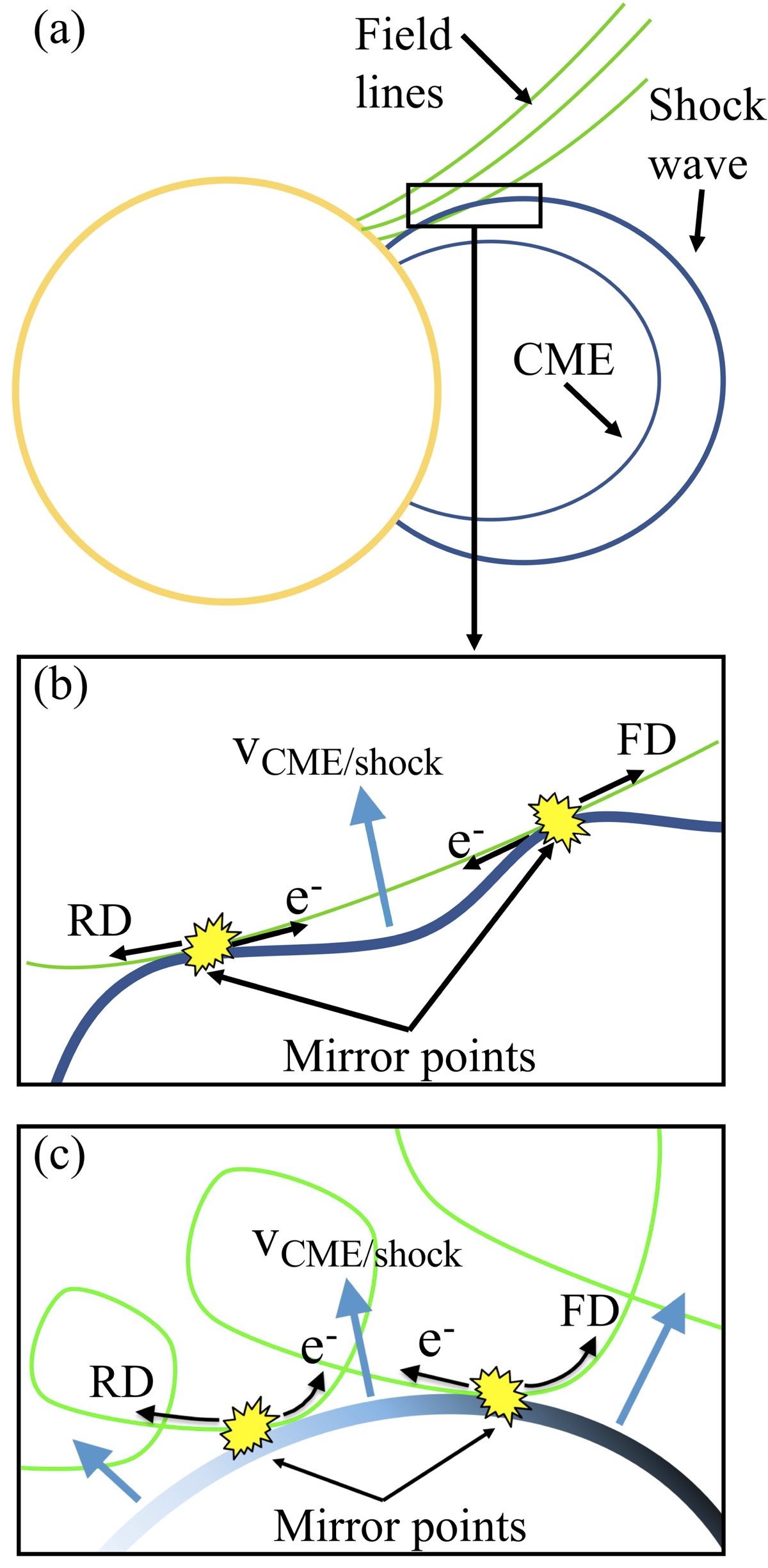Fig. 10.

Schematic demonstrating the generation of the magnetic trap geometry. This schematic shows how the CME–CME or CME–background field interaction can generate collapsing magnetic trap geometries likely to generate the moving bursts studied here (after Magdalenić et al. 2002). When the CME-driven shock wave intersects an open field line twice, these intersections form two mirror points as the CME front advances in the direction indicated by vCME/shock. At the mirror points, electrons (e−) can bounce back and forth until they escape. Once the electrons escape they can produce forward drift (FD) and reverse drift (RD) radio bursts. This can arise via a wavy shock front intersecting radial open fields (panel b) or a planar shock front intersecting helical open field lines (panel c).
Current usage metrics show cumulative count of Article Views (full-text article views including HTML views, PDF and ePub downloads, according to the available data) and Abstracts Views on Vision4Press platform.
Data correspond to usage on the plateform after 2015. The current usage metrics is available 48-96 hours after online publication and is updated daily on week days.
Initial download of the metrics may take a while.


